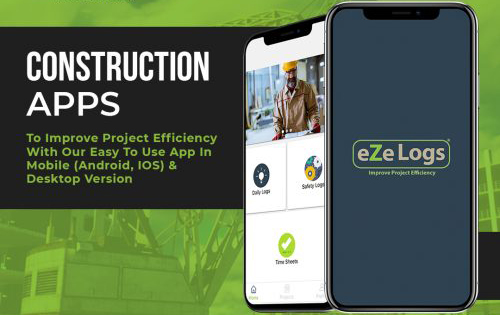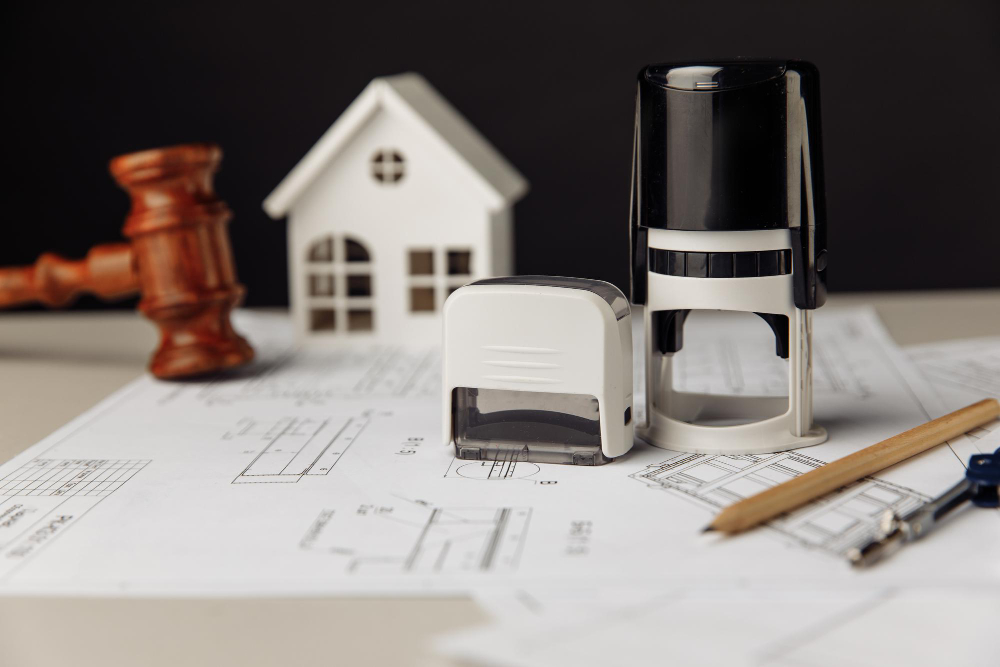Construction management involves many tasks and stakeholders. The management of submittals is one of the most critical aspects of construction management. Submittals refer to subcontractors’ or owners’ documents submitted to the project manager for review and approval. While cost codes are used to track and categorize expenses for a construction job,
For successful construction management, it is vital to integrate submittals and cost codes. This will allow for better cost tracking, collaboration, and communication, greater transparency and accountability, and reduced errors and delays. Construction professionals can make their projects more efficient by integrating cost codes and submittals. This will ensure that they are completed promptly, on budget, and to the highest quality standards.

Modern technology and software allow the integration of submittals. This automation makes it possible to track and report more accurately and quickly, which helps reduce errors and delays. Automation also facilitates communication between various stakeholders by allowing everyone to access the same information instantly.
Integrating submittals with cost codes can help improve budget management. It allows for better cost tracking and forecasting. This allows for better decision-making and problem-solving as construction professionals can spot potential problems early and take corrective actions before they become serious.
This article will discuss 5 ways that integrating cost codes and submittals can empower construction management and lead to the successful completion of construction projects. The integration of submittals, cost-code and cost tracking is essential for today’s construction professionals. It can improve cost tracking, budget management, communication, collaboration, transparency, accountability, decreased errors, delays, and overall project performance.
Key Takeaways
- Way 1: Improved cost tracking and budget management
- Way 2: Streamlined communication and collaboration
- Way 3: Increased transparency and accountability
- Way 4: Reduced errors and delays
- Way 5: Improved overall project performance
Use the software to manage the whole submittal process
Way 1: Improved cost tracking and budget management
Integrating submittals as well as cost codes can make it easier to manage construction costs and improve budget management. When submittals, cost codes, and other information are integrated, construction professionals are able to see more clearly what the project’s costs are, and can better manage them and stick to their budgets.
By integrating cost codes and submittals, construction professionals are able to track the cost of labour, materials, and equipment. This helps them find areas where costs are higher or lower than expected. This allows them to take corrective measures to reduce expenses and maintain the budget. By integrating submittals along with cost codes, professionals in construction can project future costs, make better budget projections, and plan for unexpected costs.
The integration of cost code and submittals makes it easier to collaborate among different stakeholders like project managers, contractors and subcontractors. Everyone has access to the same information about cost tracking in real-time. This makes it easier to collaborate and find solutions to cost problems. It also helps to keep projects on track.
Integrating submittals with cost codes can help increase transparency and accountability, as well as reduce construction delays. This makes it easier to find and correct errors in cost tracking.
Effective cost tracking and budget management are possible when all costs are integrated. Having submittals, cost codes, as well as other information, can facilitate better collaboration.
Way 2: Streamlined communication and collaboration
Integrating submittals with cost codes can also help construction management by streamlining communication between different stakeholders. All project stakeholders can access the same information in real time when submittals are integrated with cost codes. This improves communication and collaboration during the entire project.
Subcontractors and contractors can submit documents easily when submittals have cost codes integrated. This helps speed up approval and keeps the project on track. Cost codes can be integrated with submittals so that owners and project managers can quickly review and approve expenses. This helps reduce delays and keeps the project on track.
Integrating submittals with cost code improves transparency, and accountability, and reduces errors and delays during construction. It is easier for all parties to have instant access to the same information, which makes it possible to quickly identify and correct any errors or discrepancies.
It also allows for greater collaboration between different stakeholders such as project managers and contractors. Everyone can access the same cost-tracking information at any time, which allows them to work together to address and identify cost issues. This helps keep the project on schedule and within budget.
The integration of cost codes and submittals is crucial for collaboration and effective communication among various stakeholders. Construction professionals can increase communication, reduce delays and maintain project schedules and budgets by allowing everyone to access the same information in real time. Integrating submittals as well as cost code can help reduce mistakes and delay in construction by increasing transparency and accountability.
Way 3: Increased transparency and accountability
Integration of submittals and cost codes can empower construction management, increasing transparency and accountability in construction. All project stakeholders can have instant access to the same information by integrating submittals and cost code, increasing transparency and accountability.
Owners and project managers can monitor the progress of their projects from approval of submittals to tracking expenses. They can identify potential problems quickly and fix them before they become major. It’s also easier for everyone to have the same information. This allows them to quickly correct or identify any discrepancies.
By integrating cost codes and submittals, construction professionals can make sure projects are completed on time and within budget. By integrating submittals and cost codes, construction professionals can better manage costs and keep projects within budget. This can reduce errors and improve collaboration.
The integration of submittals and cost codes also improves communication and collaboration among different stakeholders, such as project managers, contractors, and subcontractors. By having access to the same cost-tracking information in real-time, everyone can work together to identify and address cost issues, which helps to keep the project on track and within budget.
The integration of submittals and cost codes is essential for increasing transparency and accountability in the construction process. By allowing all stakeholders to have access to the same information in real-time, construction professionals can improve communication, reduce delays, and keep the project on schedule and within budget. Furthermore, by improving transparency and accountability, the integration of submittals and cost codes can also help to reduce errors and delays in the construction process.
Way 4: Reduced errors and delays
Another way that integrating submittals and cost codes can empower construction management is by reducing errors and delays in the construction process. When submittals and cost codes are integrated, all project stakeholders have access to the same information in real time, which helps to reduce errors and delays throughout the project.

For example, when submittals are integrated with cost codes, contractors and subcontractors can easily submit documents for review and approval, which helps to speed up the approval process and keep the project on schedule. Additionally, when cost codes are integrated with submittals, project managers and owners can quickly review and approve expenses, which helps to reduce delays and keep the project on budget.
Furthermore, the integration of submittals and cost codes also improves transparency and accountability, which helps to reduce errors and delays in the construction process. For instance, when all stakeholders have access to the same information in real-time, it becomes easier to identify and address issues, such as mistakes and discrepancies, which can then be corrected quickly.
Moreover, by integrating submittals and cost code, construction professionals can also ensure that the project is completed on time, within budget and to the required quality standards. For example, by having a clear and accurate picture of the project’s expenses, construction professionals can better manage costs, stay within budget, and complete the project on time and within budget.
Furthermore, by allowing for better collaboration and transparency, the integration of submittals and cost codes can also help to reduce errors and delays in the construction process.
Way 5: Improved overall project performance
Integrating submittals with cost codes can also help construction management by improving project performance. Construction professionals can improve project performance by integrating submittals with cost codes. This will ensure that the project is completed within the budget and meets the quality standards.
Construction professionals can track the progress of a project by integrating cost codes and submittals. This allows them to easily track expenses, as well as approve submittals. They can identify problems early and correct them before they become major problems.

Construction professionals can also integrate submittals with cost codes to forecast future costs and create more accurate budget projections. This helps them plan for unexpected expenses and avoid overruns.
The integration of cost code and submittals improves collaboration between different stakeholders such as contractors, project managers, and subcontractors. Everyone can access the same cost-tracking information at any time, which allows them to work together to address and identify cost issues. This helps keep the project on schedule and within budget.
Construction professionals can ensure that projects are completed on time and within budget by integrating submittals as well as cost codes. Construction professionals can manage costs better, keep within budget, and finish projects on time and within budget by having an accurate and clear picture of project expenses.
Integration of cost codes and submittals can help reduce mistakes and delay in construction by improving collaboration and transparency.
The Bottom line
Submittals and cost codes are like the Batman and Robin of the construction world – they work together to empower builders and keep projects on track. With their combined powers, project managers can easily keep track of materials and costs, ensuring that budgets are met and deadlines are met.
So, whether you’re building a skyscraper or a single-family home, remember that submittals and cost codes are your secret weapon for a successful project.
In addition to helping keep projects on track, submittals and cost codes also provide a level of transparency that can help to minimize confusion and errors. Submittals ensure that all materials and equipment used on the project meet the specifications outlined in the plans and are approved by the appropriate parties before they are used on the job site. This helps to ensure that the final product meets the standards and requirements set forth in the plans.
Cost codes, on the other hand, help to keep track of the cost of materials and labour, which is essential for staying within budget and ensuring that the project is profitable. They also provide a way to track and analyze costs, which can help identify areas where costs can be reduced or where more efficient processes can be implemented.


